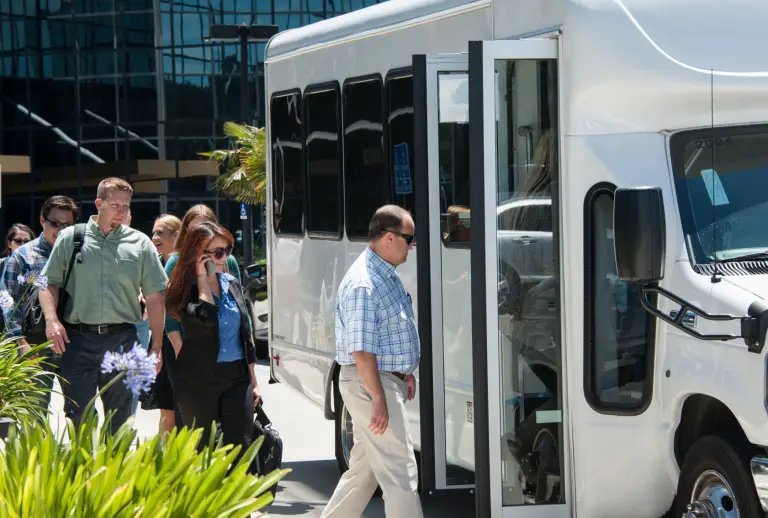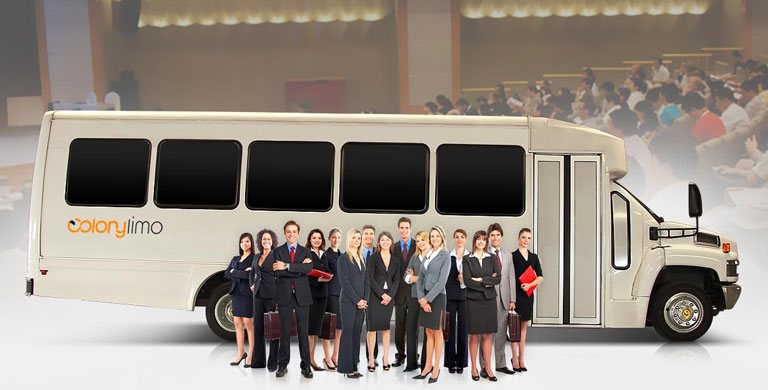20 Great Ways For Choosing Event Transportation Sites
Top 10 Tips For The Capacity And Selection Of Shuttle Services For EmployeesHere are 10 great tips on how to choose the right vehicle size and capacity in relation to shuttle service for employees.
1. Examine the needs of employees for transportation
Assess your current employee base and estimate how many are likely to use the shuttle on regular basis. Take into account factors like the amount of staff you have working shifts, as well as the most popular times to use. Use this data to determine the best size of vehicle and the amount of shuttles required to accommodate the passengers.
2. Select the Right Vehicle type
Select the vehicle most suitable for your shuttle service, based on how many employees you employ and the needs of your employees. The options include minibuses vans, or bigger buses. Minibuses are great for smaller groups and maneuver through tighter spaces, whereas larger buses are ideal for larger capacity requirements. If employees travel with bags or luggage, consider the design of the vehicle and whether it is equipped with comfortable seating.
3. Evaluate Fuel Efficiency
The expense of fuel can be a significant factor in the budgeting for shuttle services. Make sure to choose fuel-efficient vehicles in order to cut down on operating expenses. You can also consider hybrid or electric vehicles, which can provide long-term cost savings and align with the sustainability objectives. Analyzing the fuel efficiency of various models will help to make an educated decision that balances capacity with cost-effectiveness.
4. Take into consideration Accessibility Features
Assure that certain vehicles meet accessibility standards in order to be able to accommodate employees with disabilities. This could include features like wheelchair lifts, floors that are low for easy access and seating areas specifically designed for individuals with mobility challenges. Accessible transportation isn't just required by law, but it also promotes an inclusive workplace.
5. Plan for Growth and Flexibility
As companies evolve and grow, so do the size of their workforces. If you're considering vehicles, you should consider the potential of future growth. When selecting vehicles, consider the potential for future growth.
6. Research Safety Ratings and Features
Transportation for employees must be secure. When you're choosing the vehicle you will need to study the safety features and ratings. Find vehicles that have advanced safety features, such as antilock brakes and stability control. To protect your employees in transit, it is important to be sure that the vehicle you choose to use is compliant with all federal and local safety regulations.
7. Verify the reliability of maintenance and repair
Choose vehicles that have low maintenance and are stable. Vehicles that require frequent repairs can disrupt shuttle operations or cause employee discontent. It is important to research the reliability of each vehicle and establish a regular maintenance schedule. This will help keep them in optimal condition and can prolong their life.
8. GPS and Fleet Management Software
Implementing GPS and fleet management software can increase the effectiveness of your shuttle service. These software tools offer real-time tracking and route optimization based on traffic patterns and employee schedules. The use of fleet management can also help monitor vehicle usage, fuel consumption and maintenance making sure that vehicles are utilized efficiently.
9. Implement employee feedback mechanisms
Inspire your employees to participate by utilizing questionnaires or suggestion bins to provide feedback regarding vehicle comfort. Knowing the experiences of employees can help identify problems like overcrowding or seating comfort. Monitoring feedback from passengers will assist in making the necessary changes in vehicle selection or service to ensure a good transport experience.
10. Budget for Total Cost of Ownership
Be aware of the total cost ownership (TCO) when selecting vehicles. This includes the purchase cost, fuel and other costs as well as maintenance, insurance and depreciation. TCO analysis will help you make educated decisions to balance the initial investment and long-term operating costs. It is possible to make educated decisions by weighing the various costs that are involved. This will help you choose a vehicle which meets your financial requirements while offering reliability and capacity.
By following these tips organizations can pick the best vehicles to control capacity, and offer an efficient, safe and comfortable service to their employees. See the best employee transportation blog for more info including ground transportation, transportation to lax, shuttle to and from airport, airport shuttle, service shuttle, airport shuttle to airport, luxury transportation services, airport shuttle pickup at home, airport transportation services, shuttle services and more.

10 Tips For Maximizing The Route Planning Efficiency Of An Event's Transportation Provider. Occasions
Here are 10 suggestions for route planning and efficiency in the corporate event transportation service.
1. Examine the locations of attendees
Start by gathering information about where the attendees are from. Forms for registration and RSVPs with address information or general information about the location can help you do this. Understanding the geographic spread of the attendees can aid in the creation of routes that minimize travel time and maximize convenience.
2. Use Route Optimization Software
Invest in route optimization software that can analyze traffic patterns as well as road conditions and other factors to identify the most efficient routes. These tools can help identify the fastest routes, avoid congested areas, and recommend alternative routes if necessary. Technology can be utilized to boost efficiency.
3. Plan to prepare Peak Traffic Times
Be aware of peak traffic times when scheduling transportation. Analyze the historical data of traffic to identify the times of congestion most likely to happen in the vicinity surrounding the event location. Change shuttle schedules in order to avoid delays and ensure that attendees arrive on time.
4. Establish Multiple Pickup Points
To cut down on travel time and improve convenience To reduce travel time and increase convenience, you can set up several pickup locations based on attendees' location. These could be transportation hubs, hotels and popular places for gathering. By providing multiple pickup locations, you can streamline transportation and reduce distances traveled to get to the location.
5. Make a detailed schedule of your transportation
Create a comprehensive schedule of transport that includes time of departure and arrival and estimated travel time for each route. Distribute your schedule to attendees well in advance so they will know what time they should expect shuttles. It is important to have the schedule well-organized to ensure that the transportation service runs smoothly and reduces confusion.
6. Incorporate Buffer Times
Incorporate buffer times in your transportation schedule to allow for unpredictable delays like traffic jams or weather conditions. Allowing additional time between pickups and drops can reduce the likelihood that people will miss important events due to transportation issues.
7. Track real-time updates to traffic
On the day of an occasion, utilize live monitoring tools that can dynamically modify routes. If a particular route begins to get crowded being able to redirect shuttles will aid in maintaining efficiency and ensure that attendees reach their destination without significant delays.
8. Name the name of a Transportation coordinator
Choose a shuttle coordinator to the event who will oversee the shuttle service. This person will manage logistics, communicate with drivers and handle any issues that arise in real-time. It is important to have a person in charge of the transport process. This will help ensure that everything runs smoothly.
9. Communication with Attendees
Inform the attendees of the schedule of shuttles and pickup points, as well as any changes that could be made. Mobile apps, SMS messages and printed materials are all great methods of communicating with attendees.
10. Receive feedback after the event
Following the event, you can invite attendees to provide feedback about their experience with transportation. Inquire about the quality of the routes and shuttles. Additionally, inquire about their general satisfaction. This feedback can be used to determine the strengths and shortcomings of the transportation strategy.
These tips help companies plan routes and increase efficiency in corporate event transportation. The planning of routes ensures that attendees arrive on time and also creates a positive experience for the guests. Planning is vital to ensure that corporate events run smoothly. Take a look at the best official statement about corporate event transportation for more advice including best transport, transport and logistics, service transportation company, transportation specialists, transportation companies, coach transportation, transportation and logistics services, transport systems, logistics transportation services, transport manager job and more.
